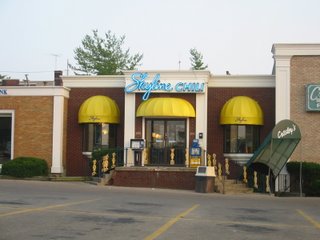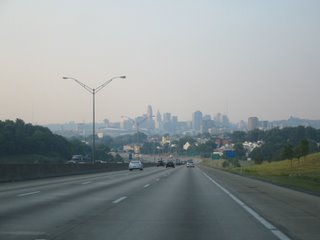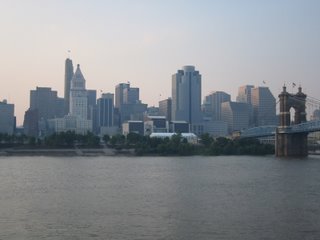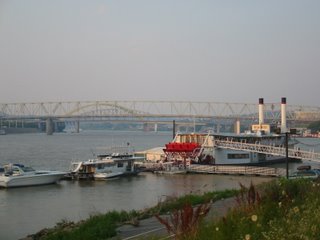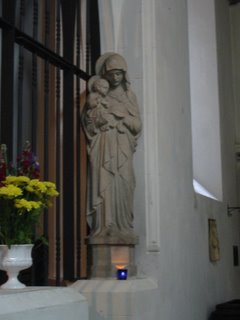 The Round Church
The Round Church, pictured here, is one of only 4 round churches in England. It is modeled after the Church of the Holy Sepulchre in Jerusalem.

Here's the dome. Even though it is much smaller than other domes we've seen in many churches, it is still striking architecturally.

The round Romanesque arches indicate how ancient this church is.
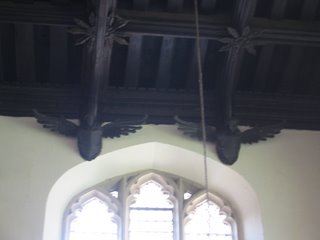
The bases of the hammer beams were fitted with these beautiful carved angels.
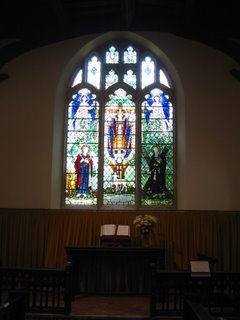
This is the main altar. The glass depicts St. George and St. Andrew on either side of the robed Risen Christ.

Here's a close-up of the stained glass.

Circling the dome were these bosses. Although they weren't 'Green Man' bosses, the facial expressions were interesting.
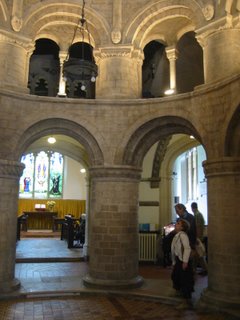
Here's one more view of the arches within the circular rotunda of the church.
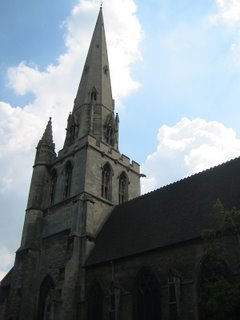 All Saints Church
All Saints Church is protected by a trust. It is no longer in use as a church, and we had to go call for the key to enter.

Inside the church it was dark but extremely colorful. The walls were stencilled in reds, yellows, greens, pinks, etc. Here is one of the interior doors.

The walls also contained bible passages, like this.

Here is the painting that hangs over the Baptismal font. It shows Jesus calling the children.

This picture shows a corner of the church. You can see the many different colors and painted wall patterns.
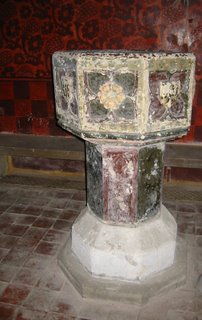
This is one of two Baptismal fonts in the church.

This is the front of the ambo (the pulpit). It actually contains 4 of these panels.

This gorgeous window is the great East window, behind the altar.

Here is the nave of the church.

All the stained glass windows were beautiful.

Here we are with Fra' Lawrence Lew, a Dominican friend from Cambridge Blackfriars and author of
Contemplata aliis Tradere, a Catholic blog "on matters mainly theological, philosophical and ecclesiastical."

And here's a good family picture taken inside of All Saints.

We passed this church,
St. Giles, nearly every day. It is located at the bottom of Castle Hill on the way into town.

Here's the nave of the church. The plain exterior hides the lovely interior, from the windows to the altar.

A statue of the Good Shepherd. . .

. . . and the Madonna and Child.
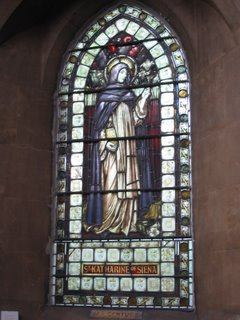
The windows in the church contain an image of a famous figure. Most, but not all, were saints. Here is St. Catharine of Siena.
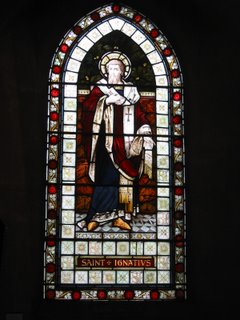
And this is St. Ignatius of Antioch. The windows were absolutely gorgeous! Danny took a picture of every one!

We visited the church during their flower festival, celebrating the completion of a 2-plus year renovation project. The artistic flower displays were spectacular as well.
This one is called 'All Souls.'
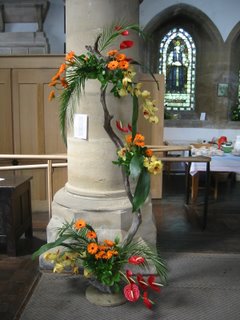
This display was called 'Christ Church.'

The reredos on the altar was an absolutely stunning mosaic.

This picture shows the screen. It's hard to see, but the cricufix is suspended from the ceiling above the screen.

This crucifix stands at the entrance to St. Giles' Church.
 St. Peter's
St. Peter's Church lies across the street from St. Giles' Church. Like several other ancient churches in Cambridge, it's no longer in use, but is open to the public.

St. Peter's Church is tiny: it seats probably 30-40 people at most. It is a simple space, without much decoration.

This picture shows the entire church!


This Baptismal font in the back of the church dates from the 13th century.

